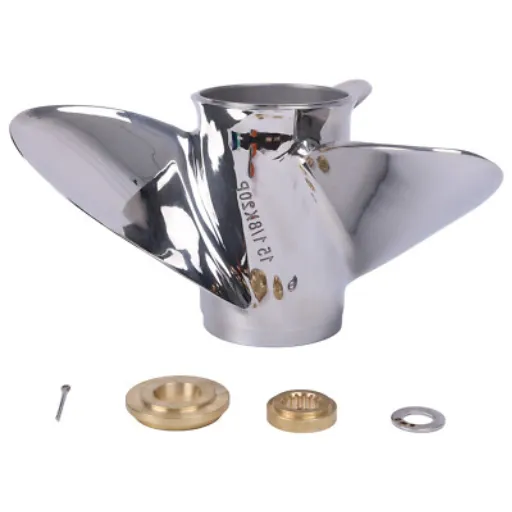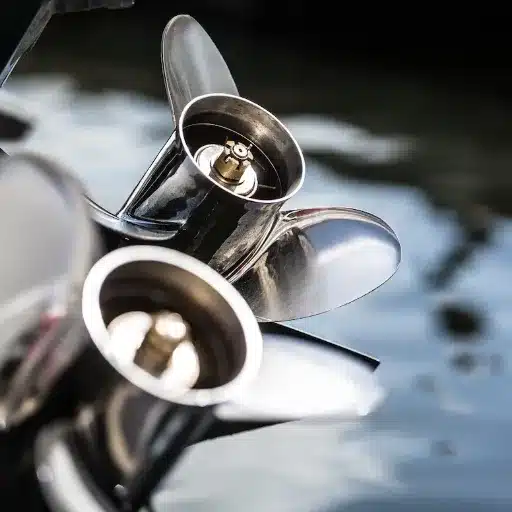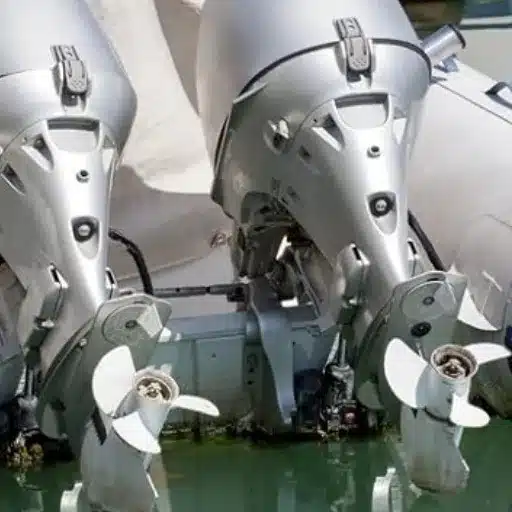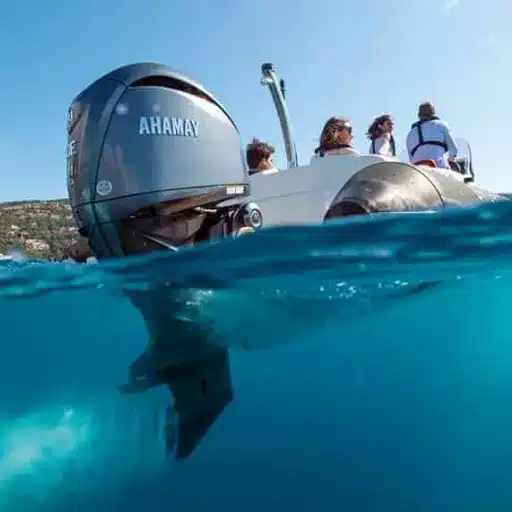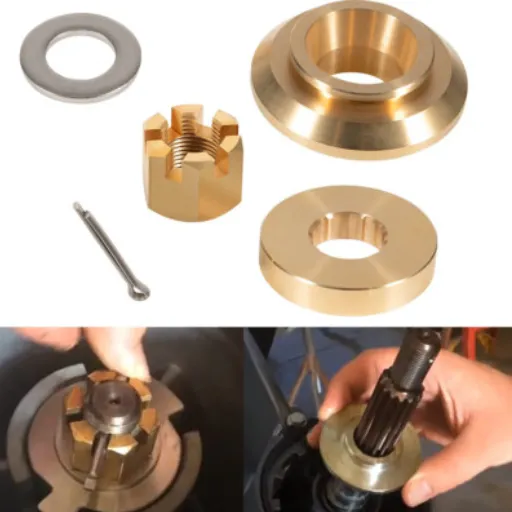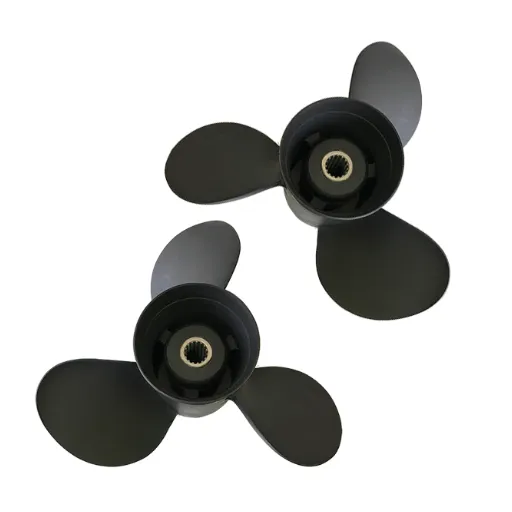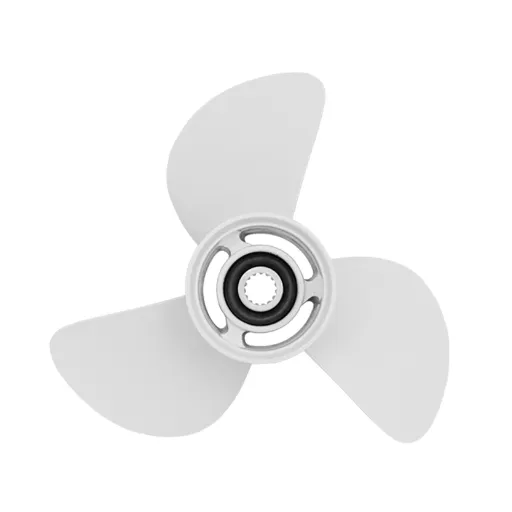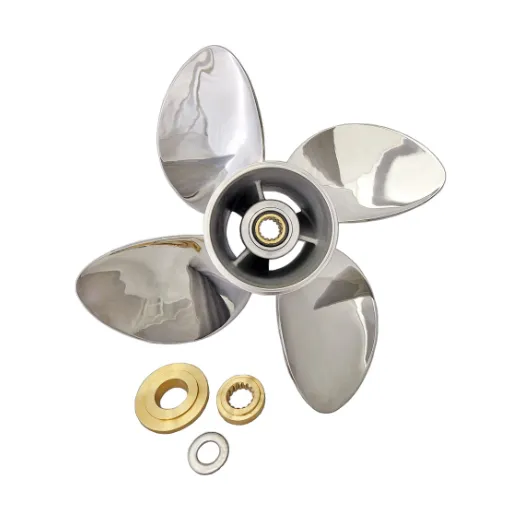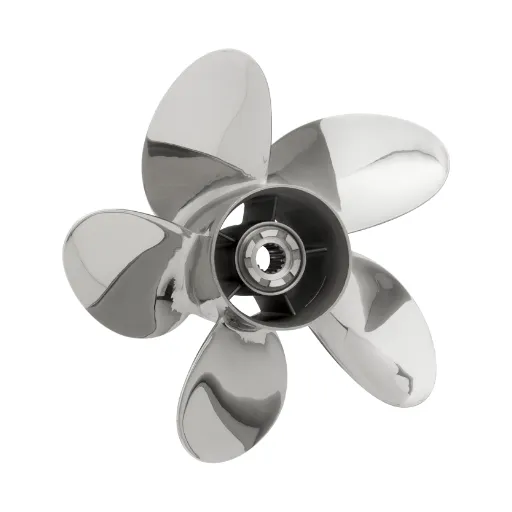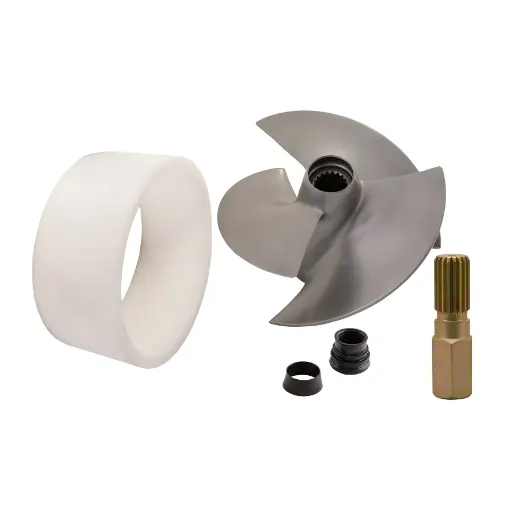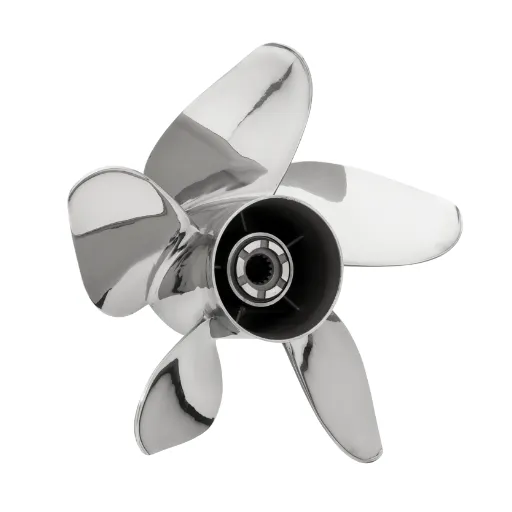With the whole idea of steering the water with confidence and precision, Yamaha outboard propellers have always been the marine people’s choice. Entering 2025, Yamaha has still set the bar for performance, durability, and innovation, making their propellers a must-have for every type of boater. The right propeller can significantly enhance the entire boating experience, be it for fishing enthusiasts, weekend cruisers, or people who simply love the thrill of open waters. The present article seeks to explain why Yamaha outboard propellers continue to be all the rage in the industry-the features that make them cutting edge, the millwork that sets them above others, and the trust that adventurers worldwide have placed in them as their #1 choice. Stay tuned as we discuss how and why Yamaha keeps beating the competition, thereby making your on-the-water enjoyment that much better.
Understanding Yamaha Outboard Propellers
What Makes Yamaha Outboard Propellers Unique?
Yamaha outboard propellers are distinguished by their unique combination of superlative engineering, high-grade raw materials, and intricate designs. Designed for pure performance, these propellers are built to ensure optimal fuel efficiency, speed, and maneuverability. Yamaha tests their propellers rigorously to ensure they can withstand even the most punishing marine environments. On the other hand, they also offer a variety of propellers for different boat needs, including a high-thrust propeller for heavy boats and a high-performance one for speed enthusiasts. Thus, Yamaha outboard propellers deliver state-of-the-art anti-corrosion construction and hydrodynamic design for performance that recreational or professional boaters cannot match.
Why the Right Propeller for Your Yamaha Outboard Matters
Choosing a propeller for a Yamaha outboard can be highly critical, depending on the performance of the boat, fuel efficiency, and overall handling. When a propeller is appropriately chosen, it causes the engine to operate at the perfect RPM range, yielding the maximum power while minimizing wear to the engine. Pitch, diameter, and the number of blades offer different changes in speed, acceleration, and maneuverability. A lower pitch prop gives better thrust and acceleration, a needed thing while towing, whereas a higher pitch prop gives more speed to lighter and faster boats. Considering the material used, such as aluminum or stainless steel, should give you some clues in weighing between durability, price, and performance. The effort to find a propeller tailored to one’s exact boating needs results in a smooth ride that is truly enjoyable.
Overview of Yamaha Propeller Options: Aluminum versus Stainless Steel
| Propeller Type | Key Features | Best For |
|---|---|---|
| Aluminum Propellers |
|
Leisure boaters, budget-conscious users, low-horsepower engines, freshwater use where corrosion risk is lower |
| Stainless Steel Propellers |
|
Top-performance activities, challenging saltwater conditions, higher horsepower engines, heavy-duty use, boaters demanding full performance |
Key Takeaway: The more one thoroughly understands the distinctions between the aluminum and stainless steel propeller options, the better the choices made by the boaters will be in line with their performance expectations, budget, or specific requirements of their water activities.
2025 Trends in Outboard Motors and Propeller Technology
Innovations in Yamaha Outboard Motor Design
Yamaha is the leader in innovative technology applied to outboard motors, emphasizing environmental sustainability, performance optimization, and convenience. Among its most important recent innovations is the incorporation of lighter, more durable materials into engine construction, which provides improved fuel efficiency while maintaining integrity. Furthermore, Yamaha has enhanced its digital control systems to integrate seamlessly with electronic interfaces for precise navigation and better control.
Another key innovation is Yamaha’s commitment to green engines that must meet the more stringent emission standards without sacrificing any of the power output. In recent times, improvements in the hydrodynamic pattern and cooling system have contributed to reducing noise emissions and increasing engine life. Meanwhile, special features for enhanced corrosion resistance and lowered maintenance intervals allow Yamaha outboards to stay reliable in even the harshest of marine environments. These cutting-edge innovations are compatible with a wide variety of boating interests, from pleasure users to commercial operators, yet again emphasizing Yamaha’s leadership in marine propulsion technology.
Trends in Propeller Performance and Efficiency
Increased interest in sustainable and cost-effective marine operations has prompted developments in propeller technology for better performance and fuel efficiency. One such trend is the use of superior materials, such as composite materials and stainless steel alloys, which enhance the durability and wear resistance of the propeller while keeping it lightweight. This increases power transfer and reduces drag, thereby increasing the marine vessel’s efficiency.
An aerodynamic blade design has also undergone significant improvements with the CFD process responsible for modeling, testing, and optimizing the blade shape. This has led to propellers that reduce cavitation and noise, enhancing performance and being more environmentally friendly by minimizing underwater disturbances.
Besides, manufacturing changes allow for the creation of custom, precise propeller designs based on vessel specifics. This could work well if commercial and industrial users need to operate at full efficiency under diverse maritime conditions. During this time, modern propellers continue to enhance marine propulsion in electric tracking facilities on both sides.
Digital technology in propeller selection
In the days of yore, digital technology was known to be a force that increased and assured the precision and efficiency of human-computer interaction with propeller selection. Today, engineers can simulate various moving conditions to assess different designs and materials before manufacturing, thanks to advanced software solutions. Hydrodynamic modeling is coupled with computational fluid dynamics in such tools to obtain detailed metrics on evaluation, including fuel consumption and sustainability. These digital platforms also prove helpful in collecting data generated from direct operations, allowing for predictive maintenance and decision-making. This type of decision-making results in less environmental impairment and reduces operational expenses, with systems optimized according to the specific requirements of vessels.
Choosing the Right Yamaha Outboard Prop for Your Needs
How to Determine the Right Pitch for Your Yamaha Boat
Choosing the proper pitch for a Yamaha boat propeller is vital to achieve a balance between performance, fuel economy, and handling. The pitch of a propeller is how far the prop would theoretically travel in one complete revolution in water with no slip. To accurately decide on your pitch, it is essential to consider the weight of your boat, how it would be used, and the range of RPMs, including your desired top speed.
Being capable of generating more power, a low-pitch propeller is suitable for heavier loads, water sports, or situations requiring rapid acceleration. Speed on the higher side may go up for grabs. High pitch, on the other hand, suits lighter boats for maximum speed, as it covers more distance per rotation, although it will generally compromise acceleration somewhat. The propeller must be set so that the engine operates within its recommended RPM rating at WOT (wide open throttle). If the RPM is outside the recommended range, there could be an adverse effect on engine longevity and performance.
Testing different pitch options in the real world, preferably in your sort of loading and boating environment, shall help fine-tune your choice. Always check Yamaha’s recommendations and consider consulting a marine professional who can provide expert input tailored to your boat and individual needs. This well-thought-out approach results in a prop that balances durability with performance and fuel economy.
Factors Affecting the Choice: Boat Weight, Engine HP, and Usage
The right prop selection for any boat must consider the reciprocal interaction among boat weight, engine horsepower (HP), and usage to maximize performance and efficiency.
Boat Weight:
Heavier boats need propellers with a lower pitch to adequately produce maximum torque and thrust. Lighter vessels, however, need propellers with a higher pitch to achieve greater top speeds. Again, the load condition, such as passengers or additional equipment, has to be considered, as increased weight can affect performance and fuel efficiency.
Engine Horsepower (HP):
To make sure your propeller specifications are compatible with the engine’s horsepower so that the engine can run within its recommended operational RPM. If underpowered, it may result in poor performance and engine strain; if overpowered, the engine will suffer from poor performance and possible damage—hence the need to consider the engine’s operating RPM range for a fair balance.
Intended Usage:
Different propeller traits are favorable for diverse activities such as cruising, watersports, or fishing. For instance, watersports might require a propeller with better acceleration and pulling power, whereas cruising typically involves using a propeller for top speed and fuel economy.
When considered individually or as a group, these factors will give you a clear idea of which propeller fits your type of boating.
Making the Best Use of the Yamaha Prop Selector Tool
Yamaha’s Propeller Selector Tool is an essential instrument for determining the perfect propeller for a boat. By entering your boat type, engine model, and standard types of activities, it generates custom recommendations for better performance. With an extensive specification database and user input, it offers accurate recommendations of pitch, diameter, and propeller material. It incorporates fresh insights that allow you to imagine how each configuration affects speed, acceleration, and fuel consumption. Whether it is watersports, angling, or just cruising, this is an all-around tool.
Case Studies: Successful Applications of Yamaha Outboard Propellers
Performance Enhancements for Fishing Boats
Fishing boats with Yamaha propellers can make a significant leap towards achieving the power, efficiency, and control needed to meet specific angler requirements. The propellers of Yamaha have been engineered to provide the desired thrust and handling, ensuring smooth operation in rough waters. For fishing-minded consumers, acceleration and retention of speed are crucial while searching for an offshore fishing area or trolling at a slow speed. Hence, Yamaha propellers work to mitigate the vibrations that would otherwise cause great fatigue for operators and enhance their stability during operations for lengthy hours. Moreover, Yamaha ensures that their hydrodynamic propeller design minimizes drag, leading to maximum fuel economy, especially from a cost and preservation standpoint.
Selecting the right Yamaha propeller, based on practical applications, can lead to quantifiable improvements in fishing environments in both fresh and salt waters. Yamaha Saltwater Series II propellers are highly regarded for their ability to withstand foul weather, providing boats with excellent hold and control in pitching and rolling waves. On the other hand, the Yamaha Talon propellers, highly sought after by freshwater anglers, are designed to provide superior handling and precise trolling capabilities when fishing in tight or obstacle-laden areas like rivers or lakes. Yamaha propellers that cater to particular boat types and fishing styles provide anglers with the assurance, performance, and reliability to focus on their sport.
Recreational Boating Yamaha Outboard Propellers
In the opinion of passionate recreational boating enthusiasts, Yamaha propellers are top choices due to their performance, long service life, and versatility. For a day of leisure on the waters or for a day of watersports, Yamaha’s large variety of propellers caters to different needs and types of boats. For instance, the stainless steel propellers from Yamaha are robust, wear-resistant, and considered reliable for high-speed operations such as water skiing and wakeboarding. In contrast, standard aluminum propellers are considered the best option at a pocket-friendly price for leisurely cruising, as they guarantee smooth acceleration and a quiet ride.
Innovative engineering is a standout feature in Yamaha’s propeller designs because it enhances both fuel efficiency and performance. Many Yamaha propellers use distinctive blade designs and rake angles to generate maximum thrust against minimum drag for a smooth and economical ride. Moreover, Yamaha is known for its extensive testing and precision machining of each propeller to meet the high expectations of the recreational boating community. These propellers are balanced to reduce vibration and improve handling, ensuring a smooth ride for both inexperienced and experienced recreational boaters.
More maintenance-oriented and customizable. With many sizes and pitch options available, the user’s final selection meets the specific needs of engine specs and water conditions. Yamaha also guides and provides compatibility tools to help in choosing the best propellers for one’s boat. With innovation, reliability, and flexibility, Yamaha has cemented its leadership status in the recreational boating world, promising a harmony of power and precision on the water for each user.
Real User Experiences: Testimonials on Yamaha Boat Props
Thousands of users have praised Yamaha boat props for their quality, performance, and durability on the water.
“Once I switched over to a Yamaha prop, everything changed. The acceleration and fuel economy were second to none, and the ride was just so much smoother.”
“Yamaha props are precision-engineered. The handling of my vessel is superior even in rough water conditions, and I have the confidence to take it on very long trips due to the durability.”
“Being able to select the right prop for my engine and boat made a huge difference. Yamaha’s resources made it easy, and now I get optimal performance.”
With that said, for all the improvements Yamaha boat props could ask for in mushy handling, fuel economy, and speed, they have never let down a user in terms of quality and trust.
Maintenance and Care for Your Yamaha Outboard Propeller
Cleaning and Inspection Tips for Your Propeller
Cleaning and inspection are the two words that keep this Yamaha outboard propeller performing well. I rinse the propeller thoroughly with fresh water after every outing, especially when saltwater or murky conditions have allowed salt, dirt, or debris to settle on it. A mild soap or marine cleaner and a soft brush are effective for cleaning with care to avoid damaging the finish on the blade. I would always check to see if there is fishing line or other materials tangled around the prop shaft, as ignoring them can lead to hazardous or severe damage to the stateley.
Routine maintenance requires close inspection of the propeller and thorough cleaning. Anything from a slight dent to a crack or gouge in the blades can create an imbalance, reducing efficiency and potentially causing an outboard engine to wear. Next, I check the propeller hub for any signs of wear or deformation, as a worn hub can lead to a loss of propulsion in severe cases. When I notice any significant damage, I ensure that a professional technician checks it or has it replaced immediately.
Giving the propeller shaft a light coating of marine grease on occasion makes a fine habit. This forestalls the propeller from blocking itself and makes subsequent removals easier. Maintaining and regularly inspecting my Yamaha propeller keeps it in top shape, ensuring optimal performance and the longest service life, whether cruising, fishing, or water marking.
Common Issues and How to Address Them
Issue 1: Damage from Debris or Underwater Obstacles
Another issue I have often encountered with Yamaha propellers is damage caused by debris or underwater obstacles. Hitting rocks, logs, or any hard object results in dents or bends to the blades of the propellers, which then affect its performance and cause vibrations. Therefore, I would normally check the prop for any signs of damage and get it repaired by an expert if need be. In cases where it is beyond repair, I would replace it so as to avoid further problems with engine efficiency or fuel consumption. Keeping a keen eye on my surroundings and proceeding carefully whenever I am in unfamiliar waters is a strategy I use to prevent the incidence.
Issue 2: Excessive Cavitation
Excessive cavitation is another problem I’ve encountered, with air bubbles forming on the propeller blades and, thus, structurally reducing the efficiency of the propulsion system. Wrong pitch in the propeller, improper installation, or erroneous engine trim can cause this problem. To avoid this, I must ensure the correct installation and proper matching of the propeller at all times in respect to my boat. Besides, once everything has been done based on the trim, I will optimize it for the best performance of the prop. If I do not know how to do this, I might need to get an expert to guide me on pitch and diameter selection according to my boating needs.
Issue 3: Corrosion and Fouling
Corrosion and fouling, especially in saltwater environments, are significant issues that can affect the Yamaha propeller. With time, salt and marine growth build-up can degrade the performance of the propeller. I usually wash the propellers with fresh water after each trip and then coat them with an anti-fouling paint to prevent marine growth. Keeping the local Yamaha propeller well-maintained and dealing with these usual problems as early as possible have ensured the power from my propeller remains reliable and smooth on the water.
When to Replace Your Yamaha Outboard Propeller
Replacing a Yamaha outboard propeller at the right time is of the utmost importance if you want to keep performance at its peak and avoid damaging your engine. I identify a few vital signs that could signify when it is time for a replacement. In my experience, any observable damage to the propeller, however slight-cracks, chips, or bent blades can affect the balance and efficiency of the prop, thereby causing vibrations or loss in fuel economy. Minor damages could eventually erupt into much greater problems if they are ignored; therefore I usually make it a point to check my propeller carefully for signs of damage.
There is one more indicator for losing the prop: it is reduced performance. When the boat struggles to reach the desired speed, experiencing reduced acceleration and possibly over-revving, it could mean the prop is operating below optimum. This means that the worn edges of the propeller due to corrosion, especially in saltwater environments, might be to blame. Another red flag that I look for regarding the propeller needing replacement is if the boat feels weird in its handling or turning, such as when turning becomes tough or uneven.
Lastly, I assess whether the propeller chosen currently is compatible with my usage of the powerboat. Over time, usage may vary, sometimes towing water sportspeople, at other times carrying heavy loads. If my propeller fails to yield the speed-thrust balance I require for my activities, then I consider options that might suit me better. Keeping these inspections up to date and solving problems as they occur has always been my strategy for maintaining good performance and enjoying smooth sailing once out on the water.
Reference Sources
- How to Choose the Right Yamaha Outboard Propeller – A comprehensive guide on selecting Yamaha propellers for optimal performance in 2025.
- How Yamaha Props Are Revolutionizing Boating Technology – Highlights Yamaha propellers’ high load ratings, stability, and fuel efficiency.
- 2025 Trends: Comparing Outboard Propeller Manufacturers – Discusses Yamaha’s precision engineering and reliability in the competitive propeller market.
Frequently Asked Questions (FAQs)
Is there a process to be followed to select the right Yamaha outboard prop?
There are a few factors to consider when selecting the right Yamaha outboard prop for any motor. The primary consideration includes the weight of the craft, horsepower, and its expected use. The pitch of the propeller, such as 16 pitch or 17 pitch, is a very important factor affecting speed and fuel consumption. You have to decide, also, between aluminum and stainless steel. Aluminum will be less costly, but stainless can offer slightly better durability and performance combined. Another is your type of outboard engine: a 3-blade or a 4-blade prop, each with its own advantages. Finally, your application should dictate which prop best suits your needs.
What are the advantages of stainless steel Yamaha outboard propellers?
In contrast with aluminum propellers, stainless steel Yamaha outboard propellers have better durability and resistance to corrosion. These propellers can withstand the rough marine environment, making them suitable for offshore boats or heavy applications. Also, higher RPMs, greater hole shots, and faster acceleration are usually afforded by stainless steel props. They also do not distort as easily under stress, making for smooth fuel consumption and minimized ventilation problems. If you are serious about the performance of your boat, you should consider a stainless steel Yamaha outboard propeller.
What are the differences between aluminum and stainless steel Yamaha outboard propellers?
Aluminum and stainless steel Yamaha outboard propellers differ mainly in their respective materials and performance characteristics. Aluminum propellers are generally cheaper and lighter, thus apt for smaller boats or casual use. The downside is that aluminum propellers tend to bend and get damaged quite easily. In contrast, a stainless steel propeller is slightly heavier and, therefore, much more durable and offers better performance at higher speeds. Also, they do not bend under load, thus providing higher thrust and better fuel economy. Your choice would depend on your boating habits, your outboard engine, and the benefits of each material.
What is a 3-blade Yamaha outboard propeller, and when should I use it?
The three-blade Yamaha outboard propeller is engineered for a good combination of speed and efficiency, making it a more general option considered by most boaters. This propeller is most common for general boating, giving an average acceleration and mid-range performance. When set for a little hole shot and cruising, three blades are an acceptable option. When you need the punch of a 4-blade for heavy loads and fast getaways, then it is a consideration. It’s time to assess your needs and what the Yamaha outboard motor can do to determine if a 3-blade is the best fit.
What does the pitch of a Yamaha outboard propeller do to performance?
Each variation in the pitch of the Yamaha outboard propellers determines how fast the boat moves, how fast it accelerates, and how it performs. The higher the pitch, such as 17, the faster the boat can go, but acceleration might be compromised; hence, it is unsuitable for heavy loads. A lower pitch produces better hole shots and acceleration, which would come in handy in towing or shallow waters. Be sure the prop pitch matches the horsepower of an outboard and the purposes of the boat so as not to cause any inconvenience. Try every pitch and see which one suits you best so that you take full advantage of the propellers in every way.
What propellers perform the best on Yamaha outboards?
Depending on the number of factors influencing the performance of Yamaha outboard propellers, factors such as boat design, engine types, and intended use are considered. Stainless steel props are considered superior in performance due to their ability to withstand corrosion and, hence, operate efficiently at higher speeds. Popular models include the K series turbo one stainless steel propeller, known for providing excellent thrust and reducing prop wash ventilation problems. Before deciding, consider the drawbacks and benefits of both 3-blade and 4-blade designs to see which ones suit your boating activities better. Therefore, with this test and the expertise of a rocket scientist, you will be able to select the best propeller that works for the exact Yamaha outboard setup you own.





